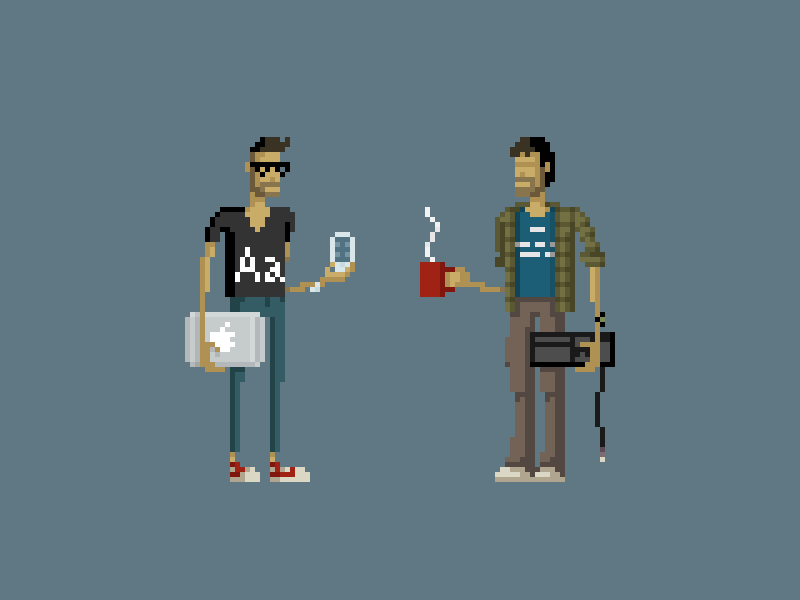
The designer is a small being apart, full of unicorns and rainbows in the head.
He's a Don Quixote from Comic Sans MS dreaming of working slumped in a fatboy, preferably from 10am in the morning.
It is in any case the image of Épinal that we like to spread, we design. However, it is necessary to support our legitimacy in such a way as to explain and evangelize a profession made up of essential rules and doctrines.
For this, our dear UX-Activists have put their brains (right and left, for once) on the case, in order to gratify us with the essential and irrefutable 10 rules of a good artistic director.
10 laws to keep close to you, 10 doctrines for surviving in an open-space/grey-carpet/Selecta-coffee-machine/It's-going-like-a-Monday, surrounded by all those people who anyway can't " not understand "
[youtube http://www.youtube.com/watch?v=90BT5Tv-ipM&w=500&h=250]
1. Don't be afraid to escalate a problem as long as a solution is offered.
If you identify a problem on a project, it is often more comfortable to point the finger at it than to take it head-on. However, at this time, we are in a strong position to propose a solution.
2. Watch daily.
 |
To keep stars in your eyes and stay creative, you have to constantly store up creativity. Magic Links: fastcodesign.com graphics.fr littlebigdetails.com laboiteverte.fr sidebar.io tympanus.net/codrops pttrns.com pinterest.com/timoa |
3. Being able to listen, analyse, understand, suggest, adapt.
You have to have an overview of the project and be a real cog in its success. Communication, as always, is the key.
4. Necessarily understand what to design.
 |
Do not hesitate to ask many questions, even several times. And often an example is the best way to get across. |
5. A little benchmark never hurt anyone.
In the research phases, involving the customer so that he can express his tastes is a source of satisfaction. It is also an opportunity to show that the project is progressing to the client.
6. Take an interest in how things are coded and don't be afraid to ask silly questions to the devs.
 |
Our trades are linked, and knowing the trade of each one makes it possible to find original technical or graphic solutions. |
7. Accept not to master everything as long as you are able to learn constantly.
We are in a profession and a sector in perpetual motion. When I started graphic design school, we didn't have laptops and we were still doing film photography. This is outdated. Constantly updating is a matter of survival.
8. Be honest, accurate and humble.
 |
Fail fast, succeed sooner. To be a scholar of our profession. Don't be a design diva. |
9. Understand the course to which the designated screen belongs.
It is as important to understand the dev as the UX around our business. A screen alone has no value. It is necessary to know the "all" in which is integrated.
10. Do not hesitate to show the client his source of inspiration.
 |
The late Steve Jobs spoke of creatives in these terms: “Creativity is just connecting things. When you ask creative people how they did something, they feel a little guilty because they didn't really do it, they just saw something.” (Creativity is just connecting different elements. When we ask creative people how they did something, they feel a little guilty because they didn't really "do it", they just got inspired of something.) |
11. [Bonus Law] Be very good at mini ping pong

